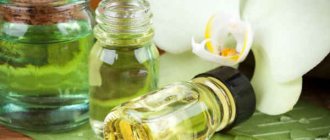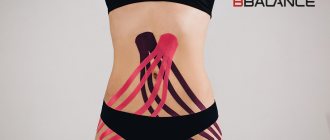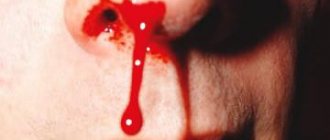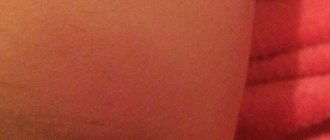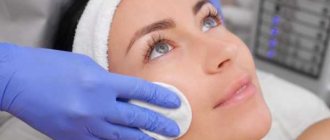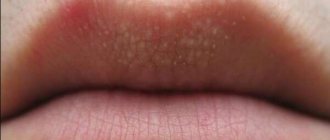How long does postoperative pain last? There is no exact answer, it all depends on the capabilities of the human body. Discomfort and even pain at the initial stage of scarring may persist constantly or occur periodically.
The suture hurts for about 2 weeks after surgery
Healing times vary from person to person, but there are averages; they depend on the location of the postoperative wound and the type of surgery:
- the suture after abdominal intervention heals for two weeks;
- wounds from laparoscopic surgery and removal of the appendix heal on the seventh day;
- healing after circumcision with phimosis (narrowing of the foreskin) lasts a little longer than two weeks;
- postpartum sutures in the perineum are scarred within 10 days;
- after a cesarean section, external sutures are removed on the sixth day;
- The stitches made in the chest area take the longest to scar, sometimes lasting a month or more.
Seams are divided into internal and external. Catgut is used to stitch together tissues inside the body (sheep intestines are used to make the material). Its advantage is its ability to dissolve; such sutures do not need to be removed.
To connect the external incisions, synthetic or natural - linen or silk - threads are used. They must be removed. In some cases, metal staples are used for stitching.
Complete growth of connective tissue in the area of the postoperative incision occurs within two to three months.
Types of postoperative sutures and suture materials
Considering the technique of suturing, there are the following types:
| Name | Description |
| Continuous | When stitching a wound, one long piece of thread is used. |
| Nodal | During medical procedures, several pieces of thread are used, which are tied at a certain distance from each other. |
| Primary | They are used to stitch the edges of the wound for complete tissue healing. |
| Secondary | Threads are placed on top of the primary seam to strengthen it if the edges have separated. |
| Ligature | A method of suturing, in case of damage to blood vessels, to restore their integrity and circulation. |
The surgeon chooses the technique for connecting the edges of the wound, taking into account the severity of the surgical intervention and the patient’s condition.
For the production of suture material, high-quality raw materials are used, which makes the threads smooth and elastic with high strength. Their advantage is good glide and hypoallergenicity, and the threads do not swell when exposed to moisture.
The following types of suture materials exist:
- natural (silk, cotton);
- synthetic;
- absorbable (catgut, biopolymers);
- non-absorbable.
Threads for suturing a postoperative wound are made from one type of raw material or several at once, and may have different coatings. The doctor chooses the suture material, taking into account the type of operation and the patient’s condition.
Types of seams
After operations in the abdominal area, surgeons must connect the tissues, for which sutures are applied. Most often, the doctor performs this manipulation manually using special threads. There is a method of connecting tissues using a skin stapler using titanium staples and paper clips. Sometimes special linear or circular stitching devices are used. These methods are less popular due to the high cost of consumables and instruments, which cannot be said about conventional surgical needles and threads.
Stages of healing of surgical wounds, healing time
Complete healing of the postoperative suture requires careful wound care; this is the only way to minimize the likelihood of serious complications. It is important to strictly adhere to your doctor’s recommendations during the recovery period.
There are several stages of healing of a postoperative suture:
| Name | Description |
| Active phase | At this stage, collagen formation occurs. Tissue healing is facilitated by fibroblast, which moves to the site of damage. |
| Epithelialization | The surface of the wound is covered with epithelium. Over time, a protective layer is formed that prevents the penetration of infection. |
| Closing the wound | The area of damage is reduced due to the reduction of myofibroblasts. |
After 3 months, the epithelial tissue is completely rebuilt. A scar is formed, which is covered with an imperceptible light line. The wound finally heals 1 year after surgery.
How to properly care for seams
If the patient is in the hospital, a doctor or nurse will care for the sutures. At home, the patient should follow the doctor's recommendations for wound care. It is necessary to keep the wound clean, treat it daily with an antiseptic: a solution of iodine, potassium permanganate, brilliant green. If a bandage is applied, consult your doctor before removing it. Special medications can speed up healing. One of these products is contractubex gel, containing onion extract, allantoin, and heparin. It can be applied after epithelization of the wound.
Healing of sutures after childbirth
For the speedy healing of postpartum sutures, strict adherence to hygiene rules is required:
- washing hands thoroughly before using the toilet;
- frequent change of gaskets;
- daily change of linen and towels;
- within a month, taking a bath should be replaced with a hygienic shower.
If there are external stitches on the perineum, in addition to careful hygiene, you need to take care of the dryness of the wound; for the first 2 weeks you should not sit on a hard surface, constipation should be avoided. It is recommended to lie on your side, sit on a circle or pillow. The doctor may recommend special exercises to improve blood supply to tissues and wound healing.
Healing of sutures after caesarean section
You will need to wear a postoperative bandage and maintain hygiene; after discharge, it is recommended to take a shower and wash the skin in the suture area twice a day with soap. At the end of the second week, you can use special ointments to restore the skin.
Healing of sutures after laparoscopy
Complications after laparoscopy are rare. To protect yourself, you should remain in bed for 24 hours after the intervention. At first, it is recommended to stick to a diet and give up alcohol. For body hygiene, a shower is used, and the suture area is treated with an antiseptic. The first 3 weeks limit physical activity.
Factors influencing the rate of wound healing
The healing process of a postoperative suture depends on numerous factors:
| Name | Description |
| Age | A young body copes faster compared to older people. |
| Body mass | Due to poor blood supply, fatty tissue is difficult to withstand various injuries, so stitching wounds in people with extra pounds is more difficult. |
| Nutrition | During the recovery period, the patient’s body requires more vitamins and microelements to regenerate damaged tissues. |
| Dehydration | Insufficient fluid levels in the body affect the functioning of internal organs and systems, on which the rate of healing of the postoperative suture depends. |
| Blood supply | In an area where there are a large number of blood vessels, wound healing occurs faster. |
| Immune status | Human immunity is necessary for protection. Various disorders slow down the process of regeneration of damaged tissues. |
| Chronic diseases | Concomitant pathologies not only slow down the healing of the postoperative suture, but also provoke numerous complications. |
| Medications | While taking certain medications, the postoperative wound heals slowly. |
| Insufficient oxygen supply | Epidermal cells need a large amount of oxygen in order for the postoperative suture to heal quickly. This process is disrupted by vascular insufficiency, tissue ischemia, or hypotension. The same applies to radiation therapy, when connective tissue grows and small blood vessels overlap. |
Secondary infection, when an infection gets into the wound, significantly worsens the condition of the suture and the regeneration process. After surgery, it is necessary to treat the incision area to completely eliminate the negative impact of provoking factors.
pain after surgery: myths and reality
Today, there are a number of misconceptions about the treatment of pain after surgery, generated mainly by the lack of objective information about the proposed therapy in the person facing this problem. We will try to clarify this issue and debunk the most popular myths.
After surgery, only the skin scar hurts
Most often, it is not the skin scar that hurts, but other tissues that were damaged by surgery. Under the skin, fascia, muscles, ligaments may ache, and scar lumps may form, which, with proper treatment, soften or dissolve.
Massage is effective for postoperative pain
Massage does improve blood circulation in the operated area, but deep postoperative scars do not resolve from massage. Or the massage must be harsh and long-lasting for relief to occur. Injection drug treatment or plasma therapy, which produce an effect within the next few days from the start of treatment, is much more effective.
Folk remedies are effective for pain after surgery
Fresh postoperative pain can be relieved with folk remedies (ointments, compresses). The more time has passed since the operation, the more difficult it is to obtain any effect.
If your back hurts after surgery on a vertebral hernia, then the hernia came out again or in another place
It may not be the hernia that hurts, but the scars after surgery, which put pressure on the blood vessels and nerve endings.
Postoperative scars are safe, although they hurt, but the pain will gradually go away
Continued or increasing pain after surgery is a sign that tissue repair is a scarring process and new tissue is being drawn into the scar. It is important to stop this process, and soften and dissolve scars, because with age there is a tendency for scarring and pain to increase.
As can be seen from the examples described above, an objective look at the problem of pain after surgery from the point of view of ways to solve it helps a person who has been diagnosed with this disease to promptly and thoughtfully approach the choice of an effective and safe treatment method.
What does a scar look like in good, dry condition?
In the absence of complications, in most cases, after surgery, the patient develops a physiological scar. The seam is almost invisible and the color is close to the skin tone.
If the operation was performed on an area of the body where blood circulation is poor, a white or pink keloid scar will form. It rises slightly above the skin and is shiny. Such a scar also forms after deep surgery.
What can you do if your stitches hurt after surgery?
After the operation, the patient is prescribed painkillers. After heavy operations, in the first two or three days these are narcotic substances. But don’t worry, because they are not addictive, but only relieve pain.
For any person, surgery is a serious step. The postoperative period that follows is no less complex and dangerous. Sometimes it lasts for a long time. If the stitch hurts for a long period after surgery, you need to see a doctor.
Possible complications in the suture area and their causes
Postoperative sutures require careful care and specialist supervision in order to heal properly.
In case of violation of medical recommendations, the patient faces various complications:
| Name | Description |
| Seroma | A common complication after surgery. Small capillaries grow together and a large amount of lymph accumulates in this area, which leads to tissue swelling. A serous fluid with a yellow tint and an unpleasant odor appears. |
| Suppuration | Purulent discharge from a wound occurs as a result of pathogenic microorganisms entering it. |
| Seal | The cause of compaction is often seroma, when a large amount of lymphoid fluid collects in the area of the surgical suture. |
| Redness | Inflammation indicates infection in the wound after surgery. |
You cannot treat yourself if complications arise. Consulting a surgeon and his recommendations will help you avoid more serious consequences, including even blood poisoning.
Possible complications
If a person after abdominal surgery (caesarean section, removal of tumors for cancer or benign formations) is in pain for a long time, the body temperature rises, suppuration appears, the suture is diagnosed as infected. This is the most common complication after surgery. The wound may become wet and inflamed if not treated correctly. A similar complication develops when unsuitable materials are used to form sutures. Wound infection also occurs when the immune system is weakened, when the patient’s body is unable to fight the pathogenic bacteria surrounding it.
Dehiscence of sutures often occurs in elderly or weakened patients, if the recovery regime after the intervention is not followed. In such cases, repeated suturing is practiced. The edges of the wound are cut and new threads are applied to prevent infection. If the sutures come apart after the injured tissue has healed, there is no need to reapply them. The wound requires routine care and observation by doctors.
Symptoms of poor seam condition
Healing of a postoperative suture does not always occur perfectly; in some situations, serious complications arise. An infection occurs, the human body reacts individually to surgery, and internal sutures are torn away.
Incorrectly performed surgery and the development of pathological processes are accompanied by poor clinical symptoms:
- the postoperative suture becomes inflamed, nearby tissues turn red;
- local temperature rises;
- the area around the suture swells;
- purulent or serous discharge appears from the wound;
- the edges of the seam diverge;
- the patient complains of severe painful sensations of a cramping or pulling nature;
- Small nodules form under the outer seam.
High body temperature indicates a serious inflammatory process. The patient needs to urgently go to the hospital and get medical help. Severe pain may be a sign of an adhesive process.
In most cases, nodules under the external suture resolve on their own. But you need to notify your doctor or surgeon about the appearance of pathological symptoms. If necessary, a specialist will select effective treatment.
about our treatment of pain after surgery
Our treatment of postoperative pain differs from the standard in its systematic approach.
The fundamental difference between the academic approach of conventional treatment and the systemic approach of our treatment is that academic medicine diagnoses and eliminates the symptom, and systemic medicine deals with the cause of the development of postoperative pain.
Pain after surgery usually develops from a combination of causes. Effective treatment requires elimination of each of them. If the cause of the development of the disease for which the operation was performed was one and eliminated surgically, then the body recovers and the pain goes away. This operation is considered “successful”. If there was a combination of reasons and only one was eliminated during the operation, then pain after the operation develops due to the remaining reasons, to which another one is added - a postoperative suture. Such an operation is considered “unsuccessful.”
What a set of causes is can be explained using the example of postoperative pain due to the removal of a herniated intervertebral disc.
Before surgery, the back pain experienced by a person diagnosed with a herniated disc appears from compression of a nerve by a prolapsed hernia. Pain can also be associated with muscle spasms, inflammatory processes in the intervertebral joints, from the incorrect structure of this part of the spine, or from a previous injury to the soft tissues of this area (muscles, ligaments).
After the operation, an additional reason for increased pain appears - a postoperative scar - tissue compaction during the fusion of the postoperative suture. Seals in the form of scars form not only on the skin, but also in deep tissues (muscles, ligaments, in some cases, tissues of internal organs).
Post-operative scars put pressure on the nerves, exacerbating the pain.
Thus, to the set of reasons existing before the operation, one more is added - postoperative scars. Over time, the pain increases, the function of movement worsens.
To treat postoperative pain, we prescribe the patient a course of subcutaneous microinjections with absorbable drugs to eliminate excessive suture seals and adhesions in soft tissues, a course of muscle mesotherapy to relieve spasms and triggers (compressions) in the muscles, a course of osteopathy to restore movement function, a course of nutraceuticals for better regeneration tissues and relieve inflammation in intervertebral joints.
Relief occurs on the first day after starting treatment. Over the next month, the pain decreases significantly. Within a few months, the person returns to his normal lifestyle.
How to speed up healing at home?
Complex therapy of a postoperative suture involves the use of antiseptic agents that reduce the inflammatory process. Wound healing creams and gels are also used, which accelerate the regeneration of damaged tissues.
In the absence of serious contraindications, you can use folk remedies, but strictly consult with your doctor to avoid complications.
Local remedies
The postoperative suture often does not heal due to problems in the circulatory system.
In this case, it is recommended to treat it with the following external means:
| Name | Application | Contraindications |
| Levomekol | The gel has a bactericidal and antimicrobial effect, promotes rapid healing of the postoperative suture. The medicine is applied directly to the wound or the open cavity is filled with well-soaked sterile wipes. The daily dosage is 3 g. |
|
| Contractubex | The ointment is applied to the area of the postoperative suture 2 times a day in the morning and evening in a small amount, rubbing in with light massage movements. The standard course of treatment lasts 30 days. | Individual sensitivity |
Before applying the cream, the postoperative suture should be treated with an antiseptic (brilliant, iodine, chlorhexidine, potassium permanganate, fucorcin). Procedures are carried out at least 2 times a day. Before processing the seam, wash your hands thoroughly.
Folk remedies
Recipes from witch doctors and healers help the postoperative scar to heal quickly if you choose the right remedy in consultation with your doctor.
| Name | Recipe | Application |
| Tea tree oil | Add to 1 tbsp. water 3-5 drops of essential oil. Mix all ingredients well. | It is recommended to apply the product to the seam using a gauze swab. Tea tree oil can be used in its pure form to lubricate a postoperative wound. |
| Onion | Peel, wash and chop a small onion using a grater. | Onion pulp should be applied to the seam 1-2 times a day. The juice kills pathogenic microorganisms, promoting the process of regeneration of damaged tissues. |
| St. John's wort | Mix dry leaves of the plant (4 tbsp) with hot water (500 ml). Leave and strain. | It is recommended to wash the wound with the prepared solution |
A properly selected folk remedy will help the stitch heal quickly, relieve pain and reduce the inflammatory process. It is important to choose a treatment method with a doctor, since an allergic reaction or worsening of the condition can be provoked.
Treatment of the wound
Treatment of the postoperative suture for its rapid healing occurs in a hospital setting and at home after discharge. In the hospital, nurses take care of all the troubles. They periodically change the dressings, which prevent infection from entering the injured surface. Be sure to carry out antiseptic treatment of the wound. Stitches should also be removed in the hospital on days 5-8.
At home after discharge, the patient treats the wound independently. During the entire postoperative recovery period, a person must adhere to simple rules:
- You can only touch the seam with clean hands.
- When showering, the wound is carefully cleaned and soaked with a disposable paper towel.
- To prevent the suture from coming apart, lifting weights and straining the abdominal muscles is prohibited for several months after the operation.
- Avoid external influences on the scar. This can lead to its compaction and proliferation of connective tissue (a colloidal scar is formed).
If pain, suspicious discharge or other alarming symptoms occur, you should consult a doctor. If the suture does not heal well after abdominal surgery, consultation with a specialist is also required.
Antiseptic wound treatment at home
To speed up the healing process, it is necessary to regularly perform antiseptic treatment of the wound 2-3 times a day. To do this, use hydrogen peroxide, a solution of potassium permanganate, alcohol, and brilliant green. An increase in the rate of healing of the seam also occurs after the use of herbal products. These include tea tree oil, alcohol tincture of calendula, and chamomile infusion.
It is recommended to treat the wound using cotton swabs or a piece of bandage. In order for the damaged area to heal quickly and painlessly, it is necessary to provide an influx of fresh air. Therefore, the bandages are removed in the hospital and are not reapplied.
To quickly heal sutures, use ointments that have an antiseptic, protective and restorative effect. These include Bepanten cream, Levomekol, Contractubes. Such ointments can be used only after consultation with a doctor. They have different principles of action and, if used incorrectly, can increase healing time.
What to do if the seam is red?
The postoperative suture often does not heal if an inflammatory process occurs. It is necessary to constantly treat the wound with antiseptics (2-4 times a day). Its redness indicates a possible wound infection, improperly installed drainage, or a surgical error.
After treatment with an antiseptic, a gauze bandage with anti-inflammatory ointment should be applied to the seam, following the instructions or doctor’s prescriptions.
What to do if you have seroma?
In most cases, seroma goes away on its own within 1-3 weeks. If after the specified period it is still present, you need to go to the hospital, the doctor will prescribe treatment.
Seroma is the reason why the postoperative suture does not heal
The main goal of therapy is to remove accumulated fluid. For this purpose, drainage or vacuum aspiration is used. In each case, special devices are used to pump out liquid.
Why can stitches hurt?
This is a normal phenomenon, because there was a gap. After the anesthesia wears off, the stitches may begin to hurt. The fact is that most young mothers breastfeed their children, so painkillers are contraindicated for them. The doctor can prescribe drugs with local action in order to somehow alleviate the patient’s plight. However, if everything is in order, there are no complications, and the woman follows all the rules, the pain should go away very soon. After suturing, you cannot sit normally for the first week. This must be done with caution and put stress on the buttock that is located on the opposite side of the seam. You can sit on the toilet almost immediately, but do not linger on it for too long and do not push too hard.
You need to make sure that everything is fine with them, they are not infected, they have not festered.
Otherwise, if this does happen, you should consult a doctor. He will most likely prescribe special antiseptic drugs. The sutures may hurt due to the fact that the woman sits for a long time, which is undesirable in the first 2 weeks after childbirth. You can take a reclining position or lie on your side.
Often they may hurt during bowel movements. For this reason, women should avoid constipation. To do this, she must monitor her diet and take, if necessary, approved laxatives.
If the pain is severe, accompanied by itching, redness, and suppuration, you should immediately consult a doctor to prevent the development of more serious complications.
Sometimes, even a year later, the stitches after childbirth make themselves felt, especially when there is additional stress on them.
What to do if a fistula forms?
A fistula is a kind of channel that connects cavities. Purulent discharge comes out through it. If they are absent, an inflammatory process develops.
The cause of a fistula is an infection that has entered the wound. The same applies to a chronic inflammatory process, a foreign body. A fistula also forms if the infection has not been completely cured or the threads have been rejected.
For treatment, the patient is prescribed anti-inflammatory and antibacterial drugs. It is necessary to wash the wound with antiseptic agents and also drink vitamins.
What to do if the seam diverges?
There are numerous reasons for seam divergence:
- infection in the wound;
- concomitant diseases in the human body;
- high blood pressure;
- tight stitches;
- overweight;
- bad habits;
- seam damage.
In this situation, the patient urgently needs consultation with a surgeon, additional treatment and strict supervision of a specialist. If the suture diverges, patients are also recommended to wear a special postoperative bandage.
Why does the postoperative suture itch, how to eliminate the itching?
The postoperative suture does not heal and itches if dirt gets into the wound. Itching is the body's reaction to the action of pathogenic microorganisms. The same thing happens when a wound heals, when it tightens and the skin dries out.
Itching may also appear as a reaction to the fastening threads. In this situation, it is not recommended to scratch the wound; you must continue to treat it with antiseptics, as prescribed by the doctor, and strictly adhere to the specialist’s recommendations.
How to treat the suture site after its removal?
After removal, the surgical wound site can be treated with a solution of furacillin, brilliant green or hydrogen peroxide. The course of treatment is 4-7 days, until the wound surface completely disappears.
Sutures after surgery provide connection and fusion of tissues of various origins. It is necessary to properly treat the suture site in order to prevent the penetration of infectious agents. Antiseptic healing ointments will help ensure rapid healing. After healing, the suture should only be removed in the surgical department. It is not recommended to relieve shock yourself. This can lead to the development of inflammation, suppuration, swelling, etc.
Dry scar care
In some situations, the postoperative suture becomes covered with a dry crust, which absolutely cannot be removed independently. It is also important to protect it from water, for example, in the bathroom while showering. Moisture promotes the proliferation of pathogenic flora and the development of the inflammatory process.
The dry crust should fall off on its own; to do this, it is enough to use special products prescribed by your doctor or folk recipes, if there are no medical contraindications.
In most cases, the wound heals quickly after surgery. However, sometimes certain characteristics of the patient’s body slow down this process. Don't panic. If the postoperative suture does not heal, it is necessary to consult a surgeon to exclude possible complications.
We begin treatment for pain after surgery
Treatment of pain after surgery in our center begins with an appointment with a neurologist. The appointment is conducted by the chief physician and leading specialist of our center, neurologist (vertebroneurologist), candidate of medical sciences Mazheiko Lyudmila Ivanovna.
During a natural birth, if the baby is large or comes out in a non-standard way, for example, with the butt forward, ruptures of the birth canal and perineum may occur. In some cases, doctors themselves make a small incision in the perineum during childbirth, if otherwise the child cannot be born. Immediately after birth, these incisions are closed with sutures. They add additional discomfort and pain after childbirth, and stitches in the perineum are a different story that needs to be experienced.
Such sutures can be placed on the cervix without anesthesia: its sensitivity in the postpartum period is reduced, but on the perineum without anesthesia it will be difficult to do. And in this case, local anesthesia is used. But if epidural anesthesia was used during childbirth, it lasts for a long time, and there is no need for additional pain relief when suturing. Sutures after childbirth can be placed on the cervix, vagina, and perineum. But it is in the latter case that the most severe discomfort and pain can be felt.
How long does it take for wounds to heal after sutures during childbirth, and is it possible to speed up this process? In general, everything is individual, it depends on many factors, and not least, on the correctness of the patient’s compliance with precautionary measures. For some things heal faster, for others slower. The speed of healing is also affected by their location and the type of surgical threads that were used. As a rule, catgut is used to apply internal sutures, which dissolves on its own. In this case, everything heals on average in 2 weeks. If surgical threads are used that do not dissolve, for example, nylon, they are removed 5-6 days after application. And the healing process itself can take from 2 to 4 weeks, and in some cases even longer.
Almost all “affected” mothers are concerned about the question: how to heal sutures faster after childbirth? The speed of healing also depends on the patient herself, on whether she follows all the rules for caring for the injured area, precautions to avoid infection, and not to re-injure these areas. She should be informed about all this in the maternity hospital.
If microbes get on post-mortem wounds, inflammation and suppuration may occur, which will significantly prolong the healing period.
